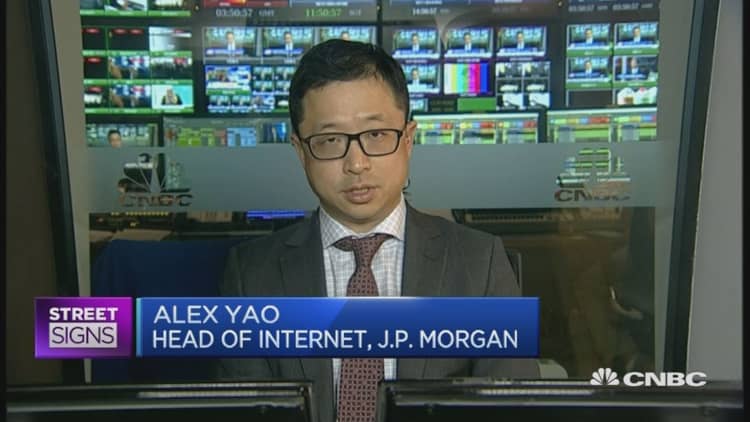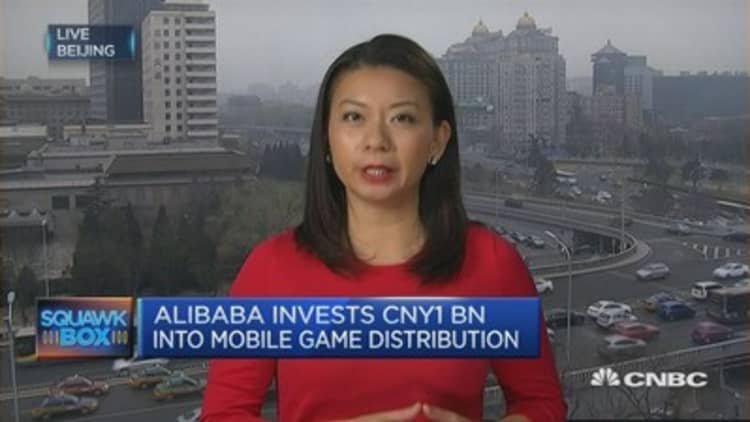China has a notorious reputation as a hub for counterfeits, but that's far from the case in its digital media scene, where a unique ecosystem has nurtured innovation.
Tencent's Wechat, for example, is a significant evolution from a pure phone chat app, and it has become an all-in-one product that combines a Facebook-like social platform with mobile payment and other functions.
Aldo Fumagalli, chairman of the Candy Hoover Group, pointed to Wechat as representative of a of "digital craftsmanship" in which China is excelling.
Fumagalli was speaking at March's Boao Forum for Asia, where a key focus was technology, its evolution and its regulation in China. Asia's largest economy boasts the world's highest mobile transaction volumes.
According to data from iResearch Global, over 10 trillion Chinese yuan ($1.45 trillion) changed hands over mobile payment platforms in 2015. This amount would more than double to 22 trillion yuan ($3.2 trillion) for 2017, the house projected.
"Mobile payment has permeated all aspects of life and changed basic, everyday habits," Ogilvy & Mather and Ipsos said in a report on the Chinese mobile payment market last year, noting that even traditional cash gift-giving has gone digital.

This also translates into an active digital advertising market, which is now the second largest after the U.S.
According to iResearch, online advertising in China reached 209 billion Chinese yuan ($30.4 billion) in 2016 — a jump of 36 percent from a year ago. The firm forecasts the growth to remain stable in the next few years.
Even though products from Western giants like Google, Facebook and Twitter are banned in China, the country's internet scene is vibrant, spawning the likes of Alibaba, Tencent, Baidu and Sina, which are all listed outside the mainland.
China's live-streaming scene, in particular, has generated a lot of attention recently.
"Social media has become an important battlefield for brands to compete for brand awareness, engage audience and convert them into customers," said Ashley Galina Dudarenok, head of strategy at Chinese social media consultancy ChoZan.
According to state news agency Xinhua, citing a senior government official, there are more than 730 million active social media users in China. Many of those users were born in the 1980s and 1990s and now live in the big cities.

"The overall landscape of Chinese social media is relatively fragmented, although there are major platforms like Weibo, WeChat, Baidu and Taobao that have the largest volume of users. Platforms are either segmented by function or cater to niche interest communities," added Dudarenok.
Multinational companies like Nike are active on Chinese social media, with the sportswear giant posting short videos on Weibo about sportsmanship. And some of that publicity may have paid off: Nike reported a 14 and 22 percent rise in sales for its footwear and apparel, respectively, in China for its 2017 fiscal third quarter.
China's digital market remains elusive to many international companies, but ChoZan offered a few tips to leverage a brand's presence in the scene:
- It's more than advertising and copy writing. Brands can try launching online campaigns, encouraging user participation by offering incentives while growing exposure and followers.
- Cooperate with influential celebrities through live streaming or other interactions. Make good use of Wechat and Weibo. The former is well-suited to sale conversion and customer services functions while Weibo is good for brand building and exposure.
- Chinese consumers are starting to pay attention to the values and lifestyle push behind brands. To win or convert consumers into paying customers, a common practice is to produce a series of short videos to convey the values of the brand. Be original, be consistent.
- Chinese consumers are seeking personalized services, so niche marketing may be required. For instance, mobile brand OPPO recently invited a boy band and a young actor to front their products. Limited editions of the phones the celebrities endorsed were also made and sold out online in 30 seconds.




